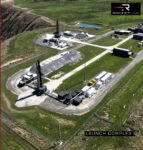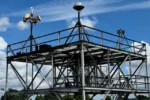In a move aimed at bolstering the domestic supply chain for soldier-borne electro-optics in the United States, Greek defense optics manufacturer Theon Sensors and American microdisplay specialist Kopin Corporation have announced plans to establish a new joint manufacturing facility in Massachusetts. The plant will produce cutting-edge night vision systems tailored to meet the growing demands of the U.S. military and allied forces.
Strategic Transatlantic Partnership Targets Soldier Modernization
The joint venture between Theon Sensors and Kopin Corporation reflects increasing transatlantic collaboration in defense technology development and production. Both companies bring complementary capabilities to the table: Theon is a leading European supplier of night vision goggles (NVGs) and thermal imaging systems used by over 60 countries, while Kopin is an established U.S.-based provider of high-performance microdisplays used in helmet-mounted displays (HMDs) and other soldier-worn devices.
The new facility—expected to be operational by mid-2025—will be located in Westborough, Massachusetts. It will focus on assembling complete night vision systems including image intensifiers, optics modules, integrated displays, and software interfaces. According to company statements, the factory will initially serve U.S. Department of Defense (DoD) requirements but may also support NATO allies under Foreign Military Sales (FMS) or direct commercial sales channels.
Enhancing Domestic Production for Critical Electro-Optics
This initiative addresses a long-standing concern within the Pentagon regarding supply chain security for critical soldier systems such as NVGs. While several U.S.-based firms like Elbit America (formerly Harris Night Vision), L3Harris Technologies, and BAE Systems already produce NVGs domestically—including ENVG-B (Enhanced Night Vision Goggle-Binocular)—the addition of another manufacturing source could help reduce bottlenecks amid rising global demand.
Theon’s CEO Christian Hadjiminas emphasized that “local production is key” to supporting rapid delivery timelines and ensuring compliance with Buy American provisions under U.S. procurement law. By co-locating with Kopin’s display fabrication capabilities—already based in Massachusetts—the joint venture can streamline integration between optical subsystems and digital components such as OLED microdisplays or low-latency video processing units.
Technology Focus: Image Intensification Meets Digital Overlay
The partnership is expected to focus on hybrid optical-digital solutions that combine traditional image intensification tubes with augmented reality (AR) overlays or fused thermal/visible imagery—a trend increasingly seen in modern soldier modernization programs like IVAS (Integrated Visual Augmentation System). While IVAS itself has faced delays due to weight and usability concerns, modular NVG platforms remain vital for dismounted infantry operations across all theaters.
Kopin’s expertise lies in advanced display technologies such as transmissive LCDs and reflective OLEDs optimized for low-light performance and minimal power draw—key parameters for wearable battlefield electronics. These displays are often embedded within eyepieces or HMDs where latency must be minimized to avoid motion sickness or targeting errors during dynamic movement.
Meanwhile, Theon’s product lineup includes devices like the NYX series monoculars/binoculars used by European special forces as well as dual-tube systems compatible with standard helmet mounts (e.g., AN/PVS-14 interfaces). Integration of these proven designs with advanced digital overlays could yield next-generation NVGs suitable for both Tier 1 units and broader infantry deployments.
Market Dynamics: Rising Demand from NATO & Indo-Pacific Allies
The timing of this investment aligns with surging demand from NATO members upgrading their dismounted soldier kits amid lessons learned from Ukraine’s high-intensity conflict environment. Additionally, Indo-Pacific partners such as Australia, Japan, South Korea, and Taiwan are expanding their night-fighting capabilities in response to regional threats posed by China’s PLA modernization.
- In 2023–24 alone, Poland ordered over 10,000 new NVGs from multiple suppliers including PCO S.A., while Germany accelerated procurement under its Infanterist der Zukunft program.
- Australia’s LAND 125 Phase 4 project includes significant funding for enhanced individual soldier sensors including thermal sights and image intensifiers.
A domestic production line located within CONUS not only enables faster delivery but also simplifies export approvals under ITAR-controlled components—a key factor when dealing with Five Eyes partners or trusted NATO allies seeking interoperability with U.S.-supplied gear.
Theon’s Growing Global Footprint
This marks Theon’s second major overseas expansion following its earlier establishment of a subsidiary facility in Kempen, Germany through its parent company EFA Group. That site primarily serves EU customers but has also supported co-development projects involving German OEMs like Hensoldt or Rheinmetall Electronics GmbH.
The move into the United States represents both an industrial milestone and strategic positioning effort by Theon amid growing competition from Israeli firms like Elbit Systems Ltd., American incumbents like L3Harris Technologies Inc., Thales USA Inc., as well as emerging players from South Korea or India entering the electro-optical market space.
Outlook: Modular Optics Driving Future Soldier Capabilities
As militaries worldwide shift toward modular open-systems architecture (MOSA) principles—including STANAG compatibility across optics mounts—the ability to rapidly configure NVGs with interchangeable sensors becomes increasingly valuable. Whether integrating laser rangefinders via Picatinny rails or fusing EO/IR feeds into tactical networks via ATAK-compatible apps—the future of soldier optics lies at the intersection of hardware agility and software-defined functionality.
If successful, the Theon-Kopin plant could become a key node within this evolving ecosystem—supplying not just hardware but also firmware updates enabling AI-assisted target recognition or GNSS-denied navigation aids through visual SLAM techniques embedded within headgear-mounted processors.










